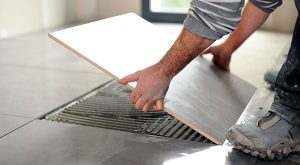Unlike most other student based cities London is the exception in the fact that students are not locked into their contracts early. Take the University of Southampton for example, Southampton being the student-dominated city it is; the search for a property for the next academic year starts in November and most of the good properties go by February. This forces students and Fresher’s especially, to seek a property and housemates right as the start of the academic year, whilst Fresher’s are establishing who their friends are. Also, it forces students to pay full summer rent although they are not in the property during the break due to the high demand for properties. But London being the bustling city it is this problem doesn’t occur.
Below are our 5 top tips for students at London universities seeking tenancies.

Photo source: https://bit.ly/2wxRiTd
- Do not rush to enquire.
Our policy, like most other agencies, is not to advertise properties until a month before the current tenancy is about to end. If you want to move in September, start enquiring in August. This ensures you do not waste your own time or the time of the agency. It also ensures that you aren’t made to pay rent over the summer unnecessarily if you are not staying in London during the holidays; this will save you untold amounts of money.
- Know your requirements.
How long do you want the property for? When are you looking to move? What is your preferred location? What is your maximum budget per calendar month? Are you willing to share facilities with other tenants? Make sure you know your requirements before you enquire so that the agent is best able to help you.
- Know what the agency requires.
For full time students, except those completing a PHD, agency and landlords require you to have a guarantor. A guarantor is someone, often a family member or loved one, who is willing to agree to pay your rent if you default payment and your rent becomes in arrears. Your guarantor can be international, though some countries are harder to reference.
- Be prompt with your referencing.
Referencing students for the property is a little more complicated as we have to verify your guarantor too. Make sure you promptly fill out your referencing forms, send over all necessary documentation and that of your Guarantors, especially if you have a holiday planned just before you move-in.
- What to know when you move-in.
An inventory check-in is often mandatory on the day of your move-in. You are required to attend and the inventory clerk will go through and note any damages to the property left by the previous tenant, this is for your benefit so you are not unfairly charged at the end of your tenancy. We would advise you to take your own pictures as evidence and store this one a backed up memory drive.
Your Deposit. All landlords and estate agents are legally required to register your deposits 30 days after receiving it. Make sure you are provided with evidence of its registration. If your landlord fails to register your deposit he may be liable to pay you 3 times the deposit amount and is prohibited to issuing a section 21, an eviction notice.


 It’s no secret that tiling is a more practical approach for your bathroom floor than paint or carpet. It is one area that experiences more water exposure than others, and unlike carpet, most tiling is able to withstand it.
It’s no secret that tiling is a more practical approach for your bathroom floor than paint or carpet. It is one area that experiences more water exposure than others, and unlike carpet, most tiling is able to withstand it.





 Renting will cut your monthly income by a almost a quarter. Taking that into consideration, it is only natural to choose wisely when it comes to places to rent. However,
Renting will cut your monthly income by a almost a quarter. Taking that into consideration, it is only natural to choose wisely when it comes to places to rent. However,